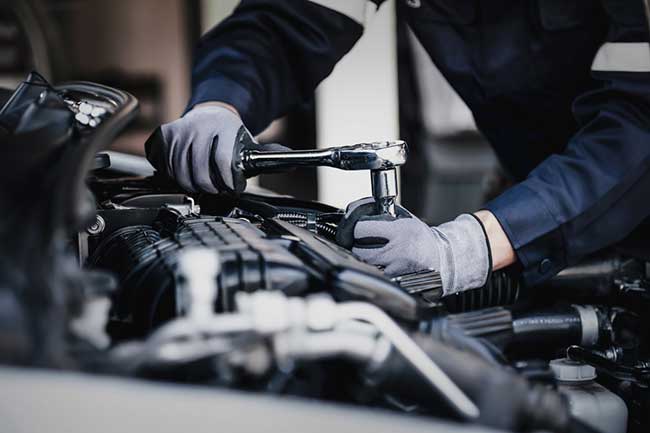All Categories
Featured

In today's vehicles, electric systems are important to nearly every element of the driving experience. From powering lights and infotainment systems to regulating sophisticated motorist help innovations, electrical issues can considerably influence automobile efficiency. Vehicle service center utilize numerous analysis techniques to swiftly and accurately identify issues with these systems. Here's a deeper check into how contemporary automobile service center diagnose electrical issues.
- Using OBD-II Scanners for First Diagnosis. When diagnosing electric problems is the OBD-II (On-Board Diagnostics) scanner, one of the initial devices service technicians make use of. This device attaches to an automobile's computer system with a typical diagnostic port. It reads and fetches problem codes created by the car's onboard computer system, which keeps an eye on multiple electrical elements like the generator, sensing units, and wiring.
These diagnostic difficulty codes (DTCs) provide a clear sign of where the electric issue could be. For example, a code indicating a damaged sensing unit can aid technicians concentrate on particular parts, such as the oxygen sensor or wheel speed sensing units, without needing to inspect the whole lorry. This tool rates up the diagnosis and assists service technicians determine the issue better.
- Visual Examinations for Obvious Issues. After scanning for codes, a technician will do an aesthetic assessment of the vehicle's electric parts. Professionals look for loose connections, frayed wires, and any indications of corrosion, as these are common culprits of electric malfunctions.
Relays and fuses are also checked since a blown fuse can avoid a system from functioning correctly. It's usually an indication of an underlying electrical concern that needs additional examination. if a fuse is located to be blown.
- Battery and Billing System Tests. The battery and billing system are central to the automobile's electric functionality, and failings in these areas can lead to a range of problems. Car repair stores will carry out particular examinations to make certain the battery is billed and the generator is working correctly. Professionals make use of a multimeter to gauge the battery's voltage. A totally billed battery ought to check out around 12.6 volts when the car is off, and it needs to remain around 13.7 to 14.7 volts when the engine is running, indicating the alternator is billing the battery.
If the battery or generator is malfunctioning, it can trigger electrical failings in various other systems. For instance, a failing alternator might not provide sufficient power to the engine control components, leading to unpredictable behavior or delaying. Professionals will certainly repair the generator or change or battery as needed.
- Circuit Screening for Power Flow Problems. Electrical issues in automobiles frequently come from problems within the circuits that power various parts. Circuit testing aids professionals identify whether electric signals are being transmitted properly through electrical wiring and adapters. Specialized tools like a test light or voltmeter are utilized to inspect for power circulation via different circuits. These examinations aid technicians determine where a circuit could be shorted, open, or damaged.
For instance, if the fronts lights are malfunctioning, technicians can check the circuit providing power to the fronts lights and map the trouble back to a damaged cable, a poor link, or a malfunctioning button. This approach enables even more precise diagnosis and repair.
- Looking for Software Application or Control Component Issues. Modern automobiles rely heavily on software application and control components to take care of various electric systems, including engine management, security attributes, and infotainment systems. It might be related to software program or firmware bugs if there's an issue with a particular system. Automobile service center often have the capacity to check for and settle software-related problems.

Making use of manufacturer-specific diagnostic devices, technicians can look for software application updates, execute resets, or reprogram control components to deal with the issue. For example, if an auto's flexible cruise control system isn't functioning, it could be because of a software program problem that requires an upgrade as opposed to a hardware failure.
- Advanced Testing for Hybrid and Electric Cars. For hybrid and electrical cars, electric diagnostics need specific devices due to the intricacy of their high-voltage systems. These automobiles are equipped with powerful battery systems and electrical drive electric motors, and troubleshooting these components requires high-level know-how.
In addition, hybrid and electric automobiles usually have actually one-of-a-kind concerns connected to energy regeneration systems, charging parts, or the interplay between the electrical motor and internal burning engine. Specialists learnt hybrid and electric automobile systems use sophisticated analysis tools to address these issues.
Final thought. Detecting electric issues in modern-day lorries is a multi-step procedure that calls for a combination of high-tech diagnostic tools, hands-on evaluations, and specialized knowledge. By using OBD-II scanners, executing visual inspections, screening batteries, and running sophisticated diagnostics, technicians make sure that electric problems are determined and taken care of, enabling your vehicle to run efficiently and securely.
Latest Posts
Take Advantage of Special Auto Repair Offers in Chicago at Montclare Auto Repair
Published en
1 min read
Explore the Greatest Auto Repair Discounts in Montclare, Chicago
Published en
1 min read
Learn How to Save Big on Car Maintenance with Montclare Auto Repair’s Exclusive Deals
Published en
1 min read
More
Latest Posts
Take Advantage of Special Auto Repair Offers in Chicago at Montclare Auto Repair
Published May 28, 25
1 min read
Explore the Greatest Auto Repair Discounts in Montclare, Chicago
Published May 26, 25
1 min read
Learn How to Save Big on Car Maintenance with Montclare Auto Repair’s Exclusive Deals
Published May 26, 25
1 min read